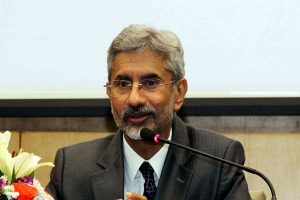Tribal children living deep inside the forests in Telangana are increasingly falling through the gaps due to the lacunae in the state-run public education system. The Gutti Koya tribals in the state live in remote habitations, located deep inside the forests, where they have no access to modern amenities such as electricity and no schools as well. In most cases, the children have to travel long distances through the forest and even cross flooded streams during monsoons to reach state-run schools, making it impossible for them to attend regularly. Since the Gutti Koyas are not original inhabitants of Telangana and settled here from Chhattisgarh, the authorities had not initially been very encouraging about the settlements.
The Gutti Koyas are an Adivasi tribe who had been caught in the crossfire between Maoists and Salwa Judum, a militia unit backed by the state government in Chhattisgarh between 2005-06. The terrified adivasis of Dantewada, Sukma, Bijapur and Bastar fled their homes and took shelter in the forests of the neighbouring state – the unified Andhra Pradesh. They settled mostly in the forests of Bhadradri Kothagudem, Mulugu, Jayashankar Bhupalpally and Khammam districts in Telangana.
Advertisement
They eventually created settlements in the forests and cultivated crops. Initially, the state government was not very encouraging, but gradually the local police tried to help the tribals while maintaining a vigil since Telangana has its share of the Left-Wing Extremism (LWE) problem in these parts. Primarily, NGOs were roped in to provide certain basic amenities like borewells for potable drinking water and solar lanterns in these settlements. Since the Gutti Koyas stayed in deep forest areas where construction activity is barred by the Centre, there was no scope for establishing schools. Both Mulugu and Bhadradri Kothagudem districts are agency areas where non-tribals cannot buy land.
Nowadays, the local administration ensures that the children are sent to residential tribal schools run by the state government. However, the Gutti Koya children are at a disadvantage in these residential schools, where classes start from Grade III. In the absence of local schools, the Gutti Koya children are not even familiar with the alphabet, and hence dropouts increase.
Nagaraj Pingili, a software employee who had set up Priya Nestham Charitable Trust has stepped in to come to the rescue of these tribal children. Nagaraj, who had been carrying out welfare activities first, started his study centres to act as bridge schools during the time of COVID-19. As the pandemic raged on, schools across the world switched to digital mode and rural children all over the country were on the verge of falling through the gaps. The disadvantaged Gutti Koya children were more vulnerable than the rural students. Nagaraj realised it did not make any sense to give them tabs since they had no electricity to charge them. He then engaged a teacher among those from the settlements to teach the children who were isolated from the rest of the world, and social distancing was not an issue. Currently, he runs two study centres. The Lions Tribal Study Centre, which started running in 2021 with funds from the Lions Club educates 16 Gutti Koya tribal kids at Kumuram Bheem Nagar in Eturnagaram mandal. The other, Priya Nestham Tribal Study Centre educates about 50 Gutti Koya tribal kids at Gundengavai habitation in Eturnagaram mandal. The children are provided study materials, uniforms for tribal kids and infrastructure for the study centre. A teacher from the Gutti Koya inhabitants is appointed with a remuneration of Rs 5000 per month who teaches the children. This model also ensures empowerment of the teacher who usually is a class VIII dropout or even had studied till Class X.
Every morning, the teacher sends in the attendance. Nagaraj makes surprise visits and also provides stationery and textbooks. But these are just the tip of the iceberg, as there are many such habitations spread across these districts. “The Gutti Koyas are at least two generations behind other kids. But the state government is now also trying, and officials are visiting the habitations to identify the kids who are eight-nine years old and putting them in tribal welfare schools,” said Nagaraj. Some of the students from the study centres this year have successfully transitioned to residential tribal welfare schools with far better amenities, offering a ray of hope to the rest.
Not all the study centres succeeded. Some have also failed, particularly since teachers of the nearby government schools where students were enrolled but did not attend, opposed the centres. Nagaraj had started Priya Nestham tribal study centres to educate 28 Gutti Koya tribal kids at Rayabandam in Eturnagaram Mandal and at Motlagudem in Venkataram mandal which failed because of the opposition of teachers of local schools.
However, it is not only the Gutti Koya children who require charitable organisations to lend a hand.The local state-run primary schools, attended mostly by children from Dalits and other economically backward families have poor infrastructure and look up to private benefactors for assistance. Nagaraj roped in the Jadavpur University Alumni Association, Hyderabad Chapter to construct washrooms at Laxmidevipet Mandal Parishad Primary School in Mulugu. Similarly, in other mandal parishad schools in the vicinity, his organisation donated gates, desks and benches, shoes, study materials to the kids and even plates and utensils to serve the food to children in residential hostels. However, the efforts hardly make a dent in addressing the overall needs of the children and only highlight the poor state of affairs in our primary education system.
The writer is a special correspondent of The Statesman











